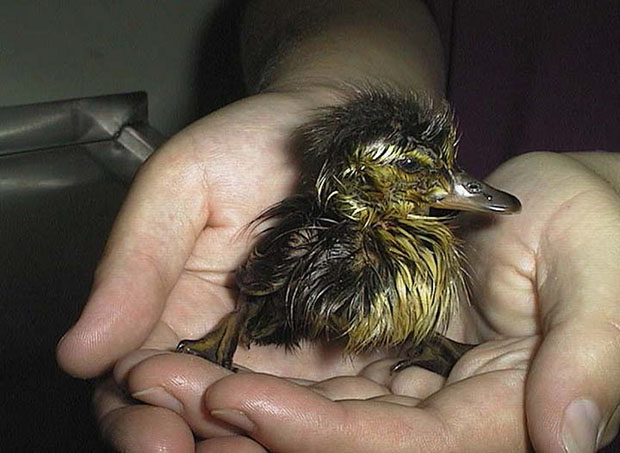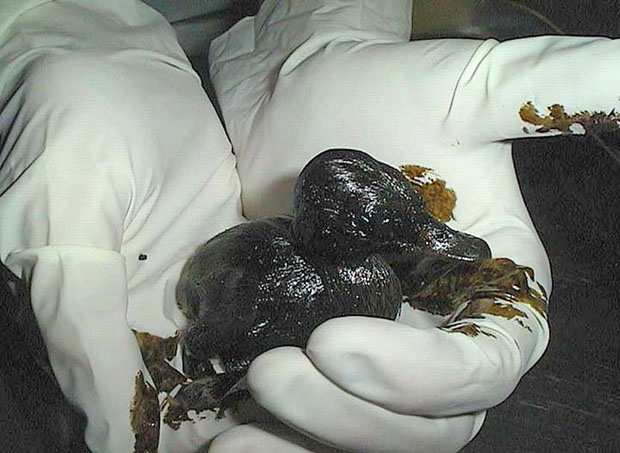Long Beach Animal Hospital (LBAH) has been providing free care for injured wildlife for over 25 years. We care for over 1,000 injured wild animals yearly and are able to release 50 percent of them back into the wild.


Oil-soaked ducklings are some of the more common examples of injured wildlife that LBAH cares for. Photos courtesy of Long Beach Animal Hospital
The majority of wild animals brought to us are birds. In the springtime, we get many baby birds that have fallen out of their nests but are not injured. We don’t care for young birds that are not injured. Here are some guidelines for what to do in this situation:
- First, let’s dispel a myth: Mother birds do not smell the scent of humans if you touch one of the chicks.
- Wild birds can carry viruses, bacteria, fungi and parasites that can be transmitted to humans.
- You need a permit to keep a wild animal or care for it, even if you plan to release it.
- If you find a baby bird on the ground under its nest and it has feathers and is alert and vocalizing or runs away from you, it should be left alone. The parents are around and are probably feeding it. If the bird has no feathers, try to find the nest or a bush and put it back. Watch and see if the parents return within an hour or so.
- If the baby bird is bleeding, appears to be cold, is unable to flap its wings, has one or both wings drooping, is shivering, has bugs crawling over it, or seems to have been bitten by another animal, bring it to us.
The procedure for this is as follows: First, place the bird in a small cardboard box, minimize movement of the box, call us to make sure we are available, and bring it to us as soon as possible. When you drop the bird off, you’ll be asked to fill out a form so that LBAH is in compliance with the California Department of Fish and Game regulations. It will be examined that day, and treatment will be determined. It will not be released back to you; because of the large number of wildlife we care for, we do not give updates.
After we provide medical or surgical care, we often send wildlife to licensed rehabilitators. We have them bring the animal back for continued medical care and to make sure it has healed before being released.
You can watch surgeries and learn how we provide medical and surgical care for the injured wildlife brought to our hospital at this link.

